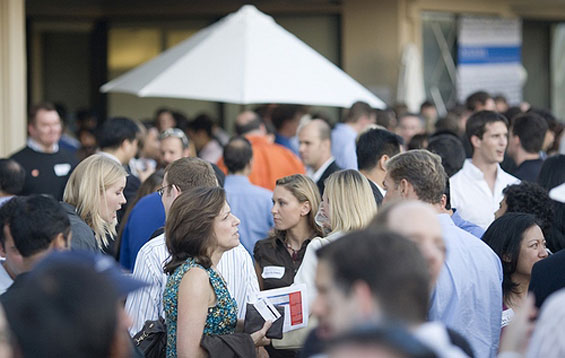
Silicon Valley is paradise for geeks, and people flock here from all over the world to be part of something very special. When I speak at events here one thing I often do is ask people in the audience to raise their hand if they live in Silicon Valley. Usually 80+% of the people raise their hand. I then ask them to leave their hand up if they were actually born here. Only a few hands ever remain up – the vast majority of people who live here and work in technology moved here at some point in their career. It’s a neat parlor trick, but it shows just how special this place is. Our entire culture in Silicon Valley is based around technology and entrepreneurship, and all the talent is imported from around the world. It doesn’t matter what color you are, what God you worship or who you choose to sleep with. All that matters is the products that are built and the technology behind them.
And Silicon Valley can be a lot of fun at certain times. When I first started writing TechCrunch in 2005 it was like that. There had been a couple of small acquisitions (Flickr, etc.), but for the most part there wasn’t a lot of venture capital moving into new web startups, the IPO window was firmly shut, and the public companies weren’t doing much M&A. There were a few dozen new startups, though, and the people who were involved with them were largely here because they loved what they did. No one had marketing departments or PR firms. Lavish launch parties were a dim memory from the late nineties.
Events started popping up as well. Our first party was in September 2005. Twenty or so entrepreneurs came by my house for beer and burgers. Chad Hurley, the co-founder of YouTube, was one of the attendees. I remember asking him if he thought the whole YouTube thing would work out.
We quickly had three more just like it (but with more people). When I look back at the pictures from those early events, I remember good times, and no one was talking about twenty million dollar venture rounds or selling out for a cool $1.65 billion. Companies like Meebo and Sphere literally launched in my living room in front of a couple of hundred genuinely interested people.
Somewhere in there the money started rolling in. Our first dime of revenue was December 2005. A few months later a lot of companies were raising $3 million A rounds, then $7 million A rounds after the YouTube acquisition. Companies started to hire marketing managers and PR firms, and spending tens of thousands of dollars on launch parties. Now, a year after the madness started, it’s even worse. Companies have to actively dodge venture capitalists to avoid raising a big round of financing.
Times are good, money is flowing, and Silicon Valley sucks.
I don’t know what it is, but the same thing happened in the late nineties before the bubble burst. Lots of startups got funded that made no sense but people got excited anyway. A unique, beautiful and well executed idea was not a story worth talking about until that first round of big, eye-popping capital. People become more anxious, and more likely to snap at someone in anger or jealousy. Rumor mongering spikes, and a crucial balance is lost. It’s no longer about beautiful products and genius developers. It’s about the money and the status, and hot PR chicks and marketing departments.
The press side of things is equally nuts. I wasn’t writing a blog in the first bubble so I can’t compare now to then. But entrepreneurs are no longer talking to us just to get our opinion and hope for a blog post and a little discussion. These guys need press to stand out from the scores of startups just like them. Saying no to them isn’t really an option. They show up at our front door with a bottle of wine or flowers. They instruct their PR firms to do anything necessary to get a story. More than once I’ve had a CEO break down and cry on the phone when we said we weren’t covering them. And more than once, I folded and wrote about them after those conversations.
I left Silicon Valley at the peak of the insanity last time around, and I was pleasantly surprised when I returned in 2005 to see so much goodwill and community surrounding innovation. Now, it’s just like the old days again, and Silicon Valley is no longer any fun. In fact, it’s turned downright nasty. It may be time for some of us to leave for a while and watch the craziness from the outside again. In a few years, things will be beautiful again. The big money will be slumbering away, and the marketing departments will be a distant memory. We can focus, once again, on the technology. And the burgers and beer.